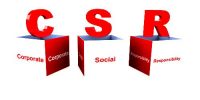A crossed cheque is a cheque that has been marked to specify an instruction about the way it is to be redeemed. A crossing is a popular device for protecting the drawer and payee of a cheque. Both bearer and order cheques can be crossed. A common instruction is to specify that it must be deposited directly into an account with a bank and not immediately cashed by a bank over the counter. The format and wording vary between countries, but generally, two parallel lines and/or the words ‘Account payee’ or similar may be placed either vertically across the cheque or in the top left-hand corner. The payment of such a cheque can be obtained only through a banker.
So, who may Cross a Cheque,
(1) The Drawer: The Drawer may Cross the Cheque generally or specially
(2) The Holder: Where the Cheque is uncrossed, the holder may cross it generally or specially.
Then,
- The Drawer of the Cheque can cross the cheque generally or specially.
- If it is an open cheque, then the holder can cross the cheque generally or specially.
- If the cheque is crossed generally, the holder can cross it specially.
The crossing of cheque gives a direction to the drawee bank to not pay the mentioned amount at the counter; instead, the payment should be done through a bank. By using crossed cheques, cheque writers are able to simply but effectively protect the cheques they write. By using crossed cheques, cheque writers can effectively protect the cheques they write from being stolen and cashed. Crossing prevents fraud and wrong payments.















